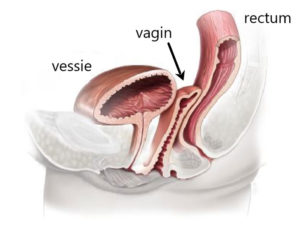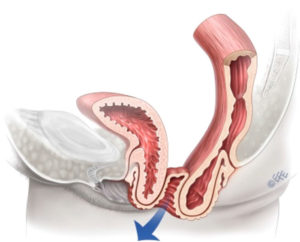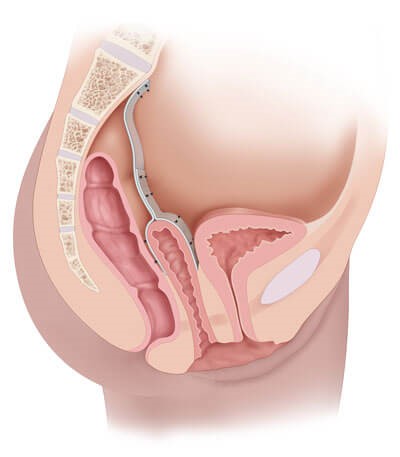Uterine prolapse
A common disorder in women
Uterine prolapse (also called descensus or procidentia) means the uterus, the bladder or the rectum have descended from their normal position down into the vagina. This phenomenon leads to vaginal discomfort or pains.
It is estimated that almost one out of three women is affected by uterine prolapse today. Urinary incontinence and pelvic organ prolapse commonly coexist.


During the procedure, a total or partial removal of the uterus may be performed if it is necessary. At the same time, a gesture to correct urinary incontinence may also be carried out.
Depending on the situation, two different types of surgeries can be performed...
The surgery process
Depending on the situation, two different types of surgeries can be performed :
Prolapse repair by vaginal route :
An incision is made at the level of the vagina where the organs have descended. The surgeon then re-integrates the bladder or rectum into the pelvis, fixing it in this position either with the help of ligaments and muscles naturally present, or with the help of strips or synthetic prostheses.
The urinary catheter is removed the day after the surgery.
After the vaginal intervention, a compress is sometimes placed in the vagina at the end of the procedure; it is removed within 24 to 48 hours.
Moderate vaginal bleeding is common during the postoperative period.
Laparoscopic promontofixation for the treatment of prolapse :
This new surgical technique has developed a lot for the last few years. It is now performed with robotic assistance using the Da Vinci® robot that we have in our Urology Department.
The procedure does not require any opening of the abdomen. Some small incisions are made on the abdomen where some trocars with the stereoscopic camera and the robot instruments are inserted for the needs of the surgery. The use of the Da Vinci robot ensures a more accurate handling and offers a 3D vision of the situation.
The vagina or uterus, bladder and rectum are lifted up and held in place using prostheses or strips that are attached to a solid pelvis element called the sacral promontory.

Lenght of the stay
2 days
Duration of the surgery procedure
Between 1 hour 30 minutes and 2 hours
Success rate
> 90%
Whatever the surgery technique used is, it is not recommended to have physical activity during the weeks following surgery to ensure proper healing and prevent recurrence of prolapse.
